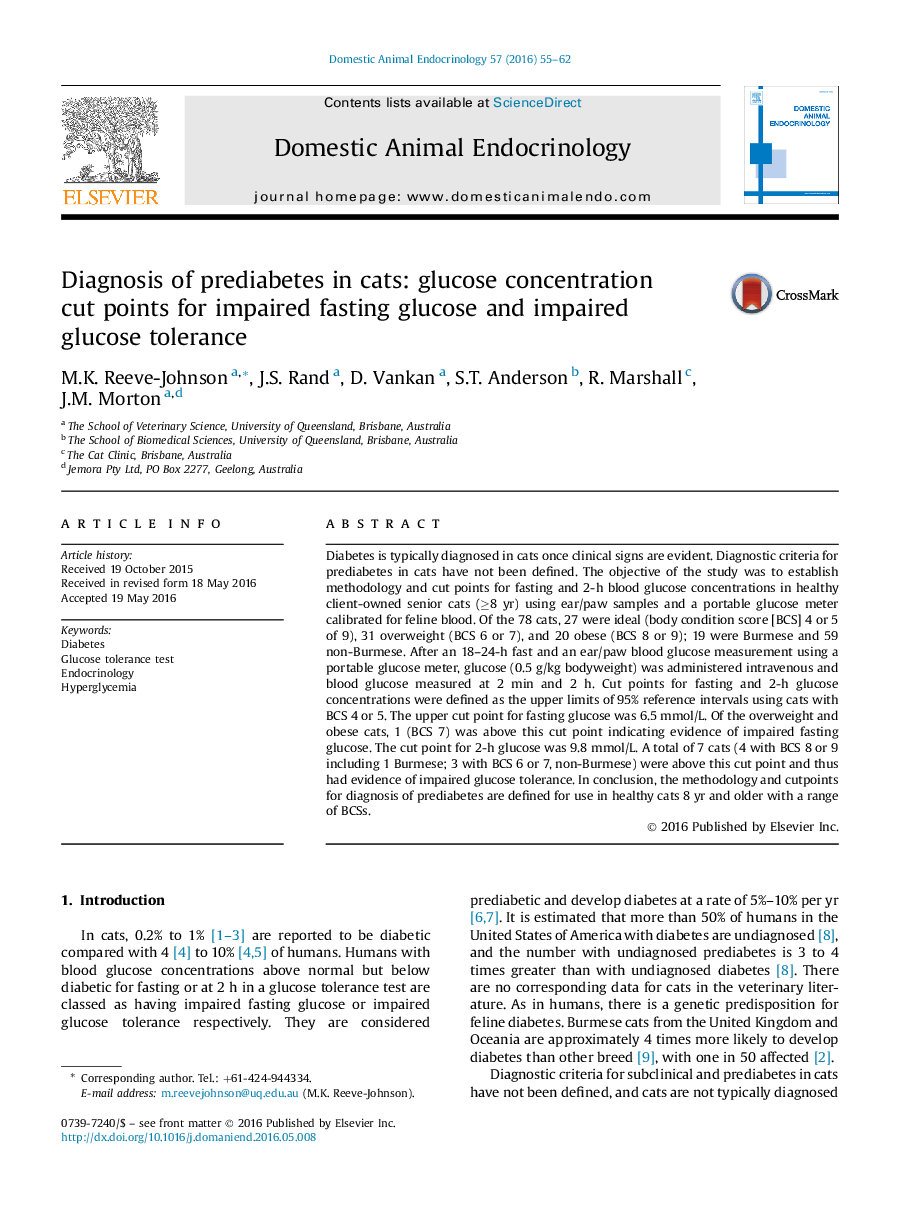| Article ID | Journal | Published Year | Pages | File Type |
|---|---|---|---|---|
| 2393409 | Domestic Animal Endocrinology | 2016 | 8 Pages |
•The aim of this study is to establish methodology and cut points for fasting and 2-h blood glucose concentrations in healthy client-owned senior cats (≥8 yr) using ear/paw samples and a portable glucose meter calibrated for feline blood.•Cut points for fasting and 2-h glucose concentrations were defined (upper limits of 95% reference intervals using cats with body condition score 4–5 [n = 27]).•The upper cut point for fasting glucose was 6.5 mmol/L.•The cut point for 2-h glucose was 9.8 mmol/L.
Diabetes is typically diagnosed in cats once clinical signs are evident. Diagnostic criteria for prediabetes in cats have not been defined. The objective of the study was to establish methodology and cut points for fasting and 2-h blood glucose concentrations in healthy client-owned senior cats (≥8 yr) using ear/paw samples and a portable glucose meter calibrated for feline blood. Of the 78 cats, 27 were ideal (body condition score [BCS] 4 or 5 of 9), 31 overweight (BCS 6 or 7), and 20 obese (BCS 8 or 9); 19 were Burmese and 59 non-Burmese. After an 18–24-h fast and an ear/paw blood glucose measurement using a portable glucose meter, glucose (0.5 g/kg bodyweight) was administered intravenous and blood glucose measured at 2 min and 2 h. Cut points for fasting and 2-h glucose concentrations were defined as the upper limits of 95% reference intervals using cats with BCS 4 or 5. The upper cut point for fasting glucose was 6.5 mmol/L. Of the overweight and obese cats, 1 (BCS 7) was above this cut point indicating evidence of impaired fasting glucose. The cut point for 2-h glucose was 9.8 mmol/L. A total of 7 cats (4 with BCS 8 or 9 including 1 Burmese; 3 with BCS 6 or 7, non-Burmese) were above this cut point and thus had evidence of impaired glucose tolerance. In conclusion, the methodology and cutpoints for diagnosis of prediabetes are defined for use in healthy cats 8 yr and older with a range of BCSs.
